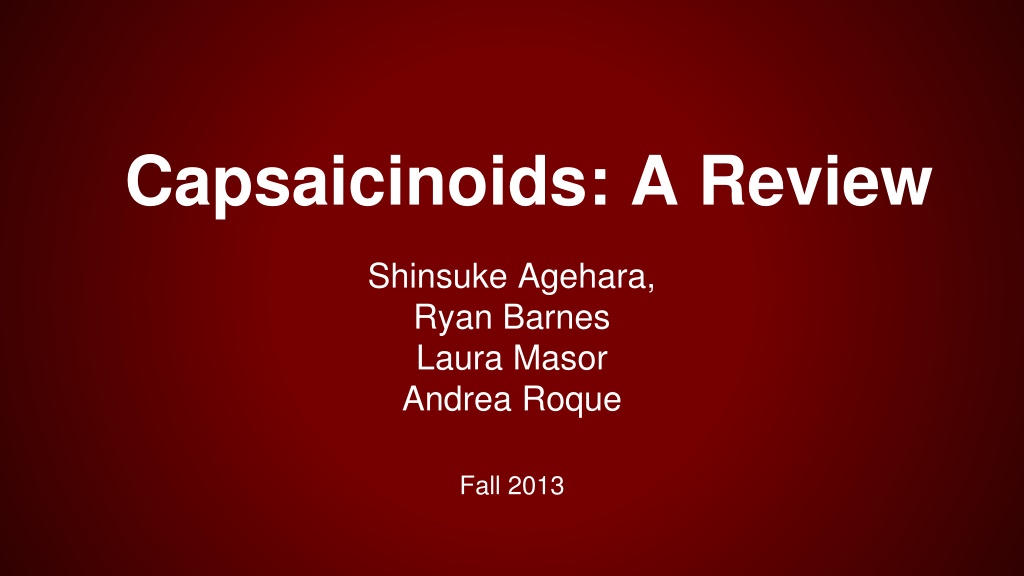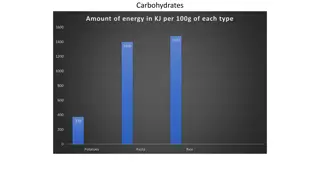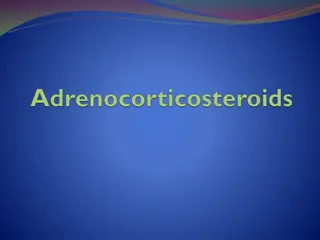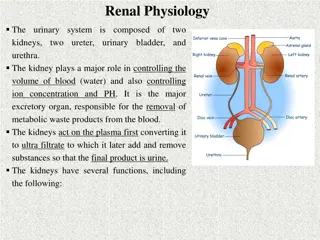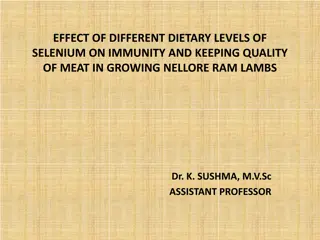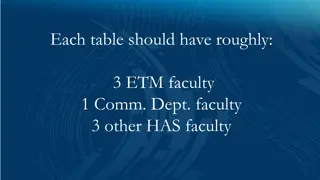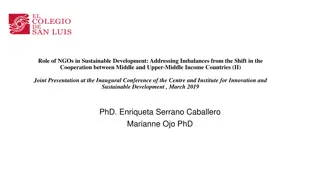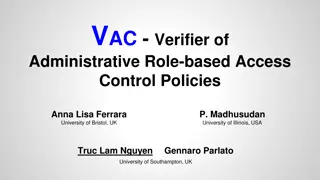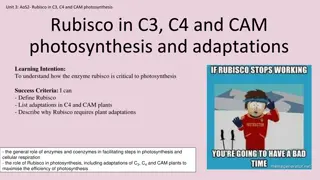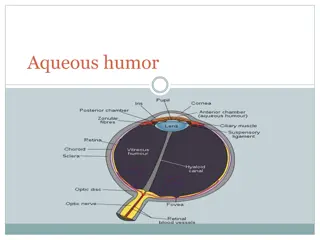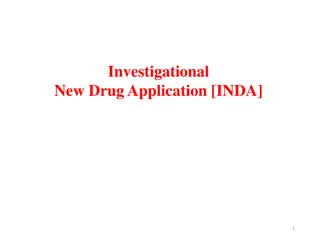Understanding the Role of Capsaicinoids in Peppers
Capsaicinoids are phytochemicals found in peppers like jalapeno and habanero, responsible for their spiciness. This review delves into their synthesis, pungency, and effects on human health. TRPV1 receptors play a key role in the sensation of heat and pain caused by capsaicinoids.
Download Presentation

Please find below an Image/Link to download the presentation.
The content on the website is provided AS IS for your information and personal use only. It may not be sold, licensed, or shared on other websites without obtaining consent from the author. Download presentation by click this link. If you encounter any issues during the download, it is possible that the publisher has removed the file from their server.
E N D
Presentation Transcript
Capsaicinoids: A Review Shinsuke Agehara, Ryan Barnes Laura Masor Andrea Roque Fall 2013
Presentation Outline Capsaicinoids o Chemistry- Ryan o Application to Medicine/Health- Andrea o Breeding & Genetics- Laura o Environmental effects- Shinsuke
Introduction to Capsaicinoids Group of phytochemicals only produced in genus Capsicum o peppers (jalapeno, habanero, bell) Makes peppers hot Widespread consumption of capsaicinoids Purposed multiple benefits to health
Capsaicinoid Synthesis Synthesized in placenta of pepper
Scoville Heat Units Invented by William Scoville in 1912. A sample is diluted until pungency cannot be detected. No Capsaicinoids ( 0 SHU) 1 ppm Capsaicin ~ 15 SHU
Capsaicinoids SHU Capsaicin ~ 16,000,000 SHU Dihydrocapsaicin ~ 15,000,000 SHU Jalapeno 2,500 10,000 SHU
Pungency Capsaicinoids cause a painful sensation when contacted by mammals. Transient Receptor Potential Vanilloid subfamily member 1 (TRPV1) also known as the capsaicin or vanilloid receptor
TRPV1 TRPV1 provides the sensation of scalding heat and pain. TRPV1 receptors are activated by: Heat Protons Calcium Capsaicinoids
TRPV1 Repeated activation of TRPV1 lowers pain responsiveness. Balance of extra/intra cellular Ca2+ Allows body to adapt to sustained stimuli over time.
Capsaicinoid Toxicity Capsaicin LD50in rats reported at ~ 150 mg/Kg Human LD50is ~ 0.5-5.0 g/kg Symptoms of acute exposure: Skin Irritation Blindness/Lacrimation (Tears) Burning Sensation
Capsaicinoids: Medicine and Health Analgesic Effects Anticarcinogenic Effects Treatment for obesity and obesity-related illnesses
Pharmacokinetics Cmax= 2.47 + 0.13 ng/ml Tmax= 47.08 + 1.99 min t = 24.87 + 4.97 min
Analgesic Effect Capsaicin patches and topical creams o topical creams - .075% capsaicin, FDA. o Qutenza - 8% capsaicin patch Adlea - capsaicin injection o long-term relief for osteoarthritis, post- surgery and neuropathic pain
Mode of Action Capsaicin induces initial period of heightened sensitivity, followed by a decrease in sensitivity o Releases substance P from sensory nervous fibers o Attaches to TRPV1, inducing an inflammatory response. o Frequent application of capsaicin leads to the depletion of substance P analgesic effect
Anti-cancer Properties Induces apoptosis Blocks NF-kB, AP-1, and STAT3 Scavenge carcinogenic substances such as nitrosamine.
Contradictory Evidence Mouse study - Small cell lung cancer o Decreased proliferation and viability. o Prevents DNA damage. Rat study - drinking water with .002% capsaicin o Developed diethylnitrosamine-initiated, enzyme-altered foci Rat study - diet with 10% chilies o gastric and liver cancer
Obesity hyperglycemia, hyperinsulinemia, and hyperlipidemia o anti-inflammatory characteristics and -adrenergic activity Rat studies o decrease in fasting glucose, insulin, and triglyceride levels o IL-6 o conclusion: decrease due to upregulation of adiponectin, which regulates glucose levels and fatty acid breakdown
Breeding/Genetics of Capsaicinoids Breeding peppers Important horticultural & agronomic traits, with capsaicinoids in mind o For direct consumption fresh, dried, processed High Capsaicinoid o for extraction o medical/pharmaceutical/research
1st thing a breeder needs: A pool of germplasm Many genotypes available for utilization o C. annuum- bell type- 0 SHU o C. Chinense- habanero o C. frutesecens- tabasco C. Chinense x C. frutesecens- Bhut Jolokia >1 million SHU
The genetics of pungency Major gene control o C/Pun1 locus o Dominant homozygous dom. CC or heterozygous Cc=hot homozygous recessive cc= mild o Many modifier genes cap, cap7.2
Correlations between capsaicinoids Capsaicin & dihydrocapsaicin Capsaicin & nordihydrocapsaicin
Generation means F1 exhibits heterosis/overdominance o progeny mean higher than parental F2and F3populations transgressive segregation o progeny segregates with some having lower mean than parental
Environmental Effects Shinsuke Agehara 1. G x E interactions 2. Environmental factors 3. Summary
G x E Interactions 6 genotypes 3 locations in TX Capsaicin ( g/g fresh wt) 200 0 100 300 400 500 Genotype Kurk-orange H5-dark orange H2-orange H1-red H3-orange H6-yellow
Temperature Optimal in vitro enzyme activity = 37 C Major factor on photosynthesis (glucose valine capsaicin) Type Treatment 24 30 C 28/16 28/28 C Capsaicinoid Yield Chili (mild) Chili (mild) (53%) NS
Light Major factor on photosynthesis (glucose valine capsaicin) High absorption of light at 450 and 680 nm Type Treatment 18 24 h day Blue and red LED Capsaicinoid Yield NS Chili (mild) Chili (hot) (67%)
Nitrogen Capsaicin requires 3 nitrogenous molecules More N = chlorophyll = photosynthesis Type Treatment 1 22.5 mM 1 15 mM Capsaicinoid (x2) (x3) Yield Jalapeno Habanero NS
Other environmental factors Factor Capsaicinoid or NS Yield Water stress Elevation Potassium NS
Summary of Enviromental Effects To increase capsaicinoid production or control pungency at the desired level Selection of appropriate cultivars for specific environmental conditions Manipulation of temperature, LED, and N fertilization
References Butcher, J.D., K.M. Crosby, K.S. Yoo, B.S. Patil, A.M.H. Ibrahim, D.I. Leskovar, and J.L. Jifon, 2012. Environmental and genotypic variation of capsaicinoid and flavonoid concentrations in Habanero (capsicum Chinense) peppers. HortScience 47:574-579. Blum, E., M. Mazourek, M. O'Connell, J. Curry, T. Thorup, K. Liu, M. Jahn, and I. Paran, 2003. Molecular mapping of capsaicinoid biosynthesis genes and quantitative trait loci analysis for capsaicinoid Bosland, P.W. and J.B. Baral, 2007. Bhut Jolokia The World's Hottest Known Chile Pepper is a Putative Naturally Occurring Interspecific Hybrid. HortScience 42:222-224. Caterina, M. J.; Schumacher, M. A.; Tominaga, M.; Rosen, T. A.; Levine, J. D.; Julius, D., The capsaicin receptor: a heat-activated ion channel in the pain pathway. Nature 1997, 389, 816-824. Curry, J., M. Aluru, M. Mendoza, J. Nevarez, M. Melendrez, and M.A. O Connell, 1999. Transcripts for possible capsaicinoid biosynthetic genes are differentially accumulated in pungent and non-pungent Capsicum spp. Plant Science 148:47-57. Gangadhar, B.H., R.K. Mishra, G. Pandian, and S.W. Park, 2012. Comparative study of color, pungency, and biochemical composition in chili pepper (Capsicum annuum) under different light-emitting diode treatments. HortScience 47:1729-1735. Gurung, T., S. Techawongstien, B. Suriharn, and S. Techawongstien, 2011. Impact of environments on the accumulation of capsaicinoids in Capsicum spp. HortScience 46:1576-1581. Johnson, T.S., G.A. Ravishankar, and L.V. Venkataraman, 1990. In vitro capsaicin production by immobilized cells and placental tissues of Capsicum annuum L. grown in liquid medium. Plant Science 70:223-229. Lewis Sr., R. J. Sax s Dangerous Properties of Industrial Materials, 10th ed.; John Wiley & Sons, Inc.: New York, 2000; p 702 Monforte-Gonz lez, M., A. Guzm n-Antonio, F. Uuh-Chim, and F. V zquez-Flota, 2010. Capsaicin accumulation is related to nitrate content in placentas of habanero peppers (Capsicum chinense Jacq.). Journal of the Science of Food and Agriculture 90:764-768.
References Murakami, K., M. Ido, and M. Masuda, 2006. Fruit pungency of 'Shishito' pepper as affected by a dark interval in continuous fluorescent illumination with temperature alteration. J. Soc. High Tech. Agric. 18:284-289. Narasimha Prasad, B.C., V. Kumar, H.B. Gururaj, R. Parimalan, P. Giridhar, and G.A. Ravishankar, 2006. Characterization of capsaicin synthase and identification of its gene (cys1) for pungency factor capsaicin in pepper (Capsicum sp.). Proceedings of the National Academy of Sciences of the United States of America 103:13315-13320. Pingle, S. C.; Matta, J. A.; Ahern, G. P., Capsaicin Receptor: TRPV1 A Promiscuous TRP Channel. In Transient Receptor Potential (TRP) Channels, Flockerzi, V.; Nilius, B., Eds. Springer Berlin Heidelberg: 2007; Vol. 179, pp 155-171. Radovich, T., K. Crosby, G. Teves, A. Arakaki, and A. Ahmad, 2012. It's Hot in Hawai'i: Capsacin Content of Hawaii-grown Chili Peppers, Hanai'Ai/The Food Provider. Rahman, M.J. and H. Inden, 2012. Effect of nutrient solution and temperature on capsaicin content and yield contributing characteristics in six sweet pepper (Capsicum annuum L.) cultivars. Journal of Food, Agriculture and Environment 10:524-529. Rosenbaum, T.; Gordon-Shaag, A.; Munari, M.; Gordon, S. E., Ca2+/Calmodulin Modulates TRPV1 Activation by Capsaicin. The Journal of General Physiology 2004, 123, 53-62. Saito, A.; Yamamoto, M. Acute Oral Toxicity of Capsaicin in Mice and Rats. J. Toxicol. Sci. 1996, 21, 195-200. Schweiggert, U., R. Carle, and A. Schieber, 2006. Characterization of major and minor capsaicinoids and related compounds in chili pods (Capsicum frutescens L.) by high-performance liquid chromatography/atmospheric pressure chemical ionization mass spectrometry. Anal. Chim. Acta 557:236-244.
References Sung, Y., Y.Y. Chang, and N.L. Ting, 2005. Capsaicin biosynthesis in water-stressed hot pepper fruits. Botanical Bulletin of Academia Sinica 46:35-42. Stewart, C., B.-C. Kang, K. Liu, M. Mazourek, S.L. Moore, E.Y. Yoo, B.-D. Kim, I. Paran, and M.M. Jahn, 2005. The Pun1 gene for pungency in pepper encodes a putative acyltransferase. The Plant Journal 42:675-688. Zewdie, Y. and P.W. Bosland, 2000. Capsaicinoid inheritance in an interspecific hybridization of Capsicum annuum C. chinense. J. Amer. Soc. Hort. Sci. 125:448-453. by high-performance liquid chromatography/atmospheric pressure chemical ionization mass spectrometry. Anal. Chim. Acta 557:236-244.
Questions? Capsaicinoids: A Review
